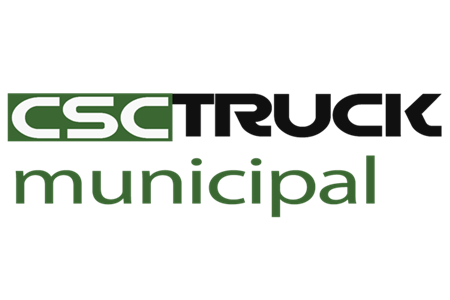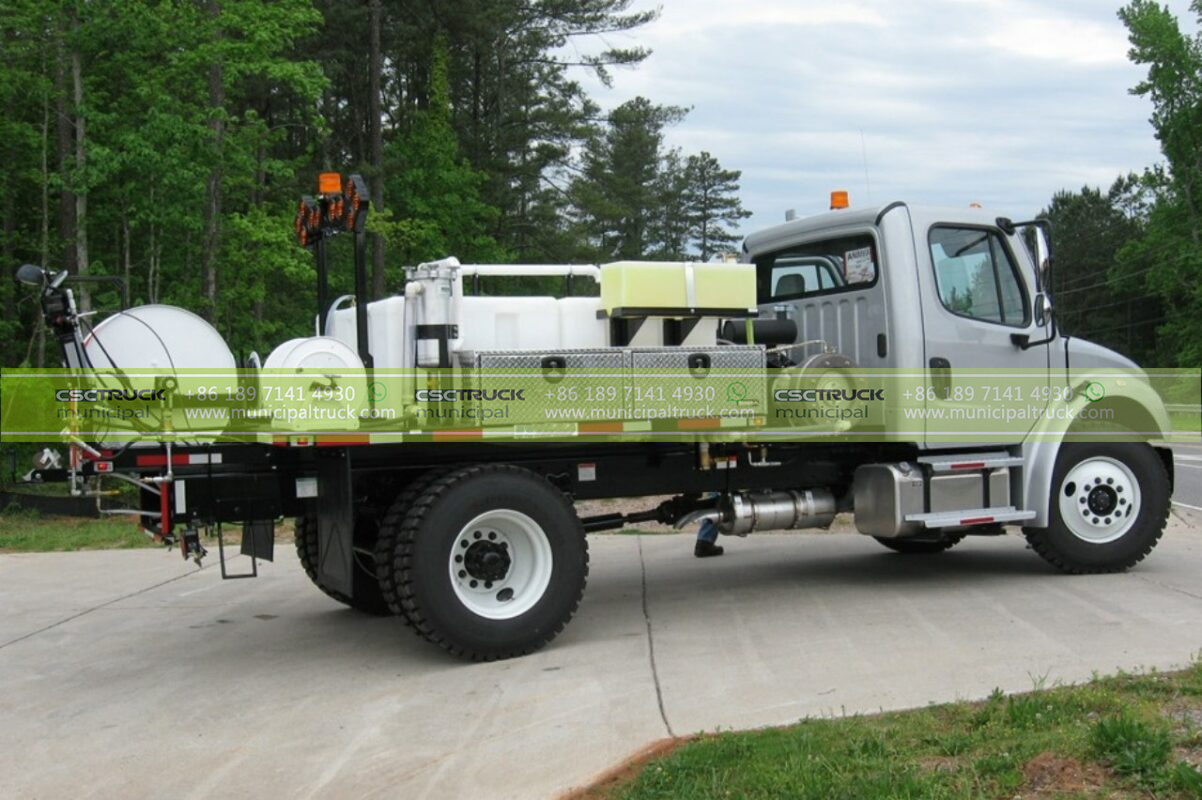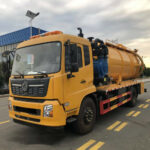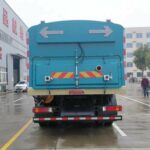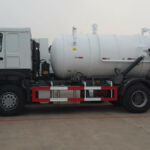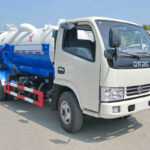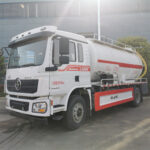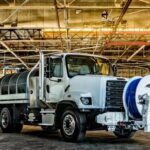As receding floodwaters expose the grim aftermath of monsoon season—from submerged neighborhoods in Dhaka to choked drains in Mumbai—a specialized breed of municipal warriors mobilizes to reclaim drowned cities. Water jetting trucks emerge as the definitive solution for restoring hydrological order, deploying pressurized streams that slice through monsoon debris with surgical precision. These high-velocity systems represent not just cleaning equipment but critical infrastructure guardians, transforming urban resilience in an era of intensifying precipitation extremes.
The Monsoon Aftermath: When Cities Drown in Their Own Waste
Post-monsoon urban paralysis stems from a complex matrix of failures:
- Sediment Tsunamis: Kolkata’s 2024 floods deposited 78,000 tons of silt into 1,200 km of drains within 72 hours
- Biohazard Breeding: Chennai’s stagnant post-rain pools showed 400% higher coliform counts than WHO limits
- Infrastructure Collapse: Manila’s submerged drains accelerated road corrosion by 17 years
- Economic Thrombosis: Bangkok’s 2023 post-monsoon traffic jams cost $14 million/hour in productivity loss
The hidden crisis lies beneath: a single coconut shell can reduce drain capacity by 32%, while plastic films create dam effects that redirect flooding into residential zones. Traditional excavation methods worsen the damage—backhoes fracture century-old brick conduits, while manual cleaning endangers workers in confined toxic atmospheres.
Hydrodynamic Warfare: Engineering Behind Jetting Dominance
Modern jetting trucks deploy multi-stage hydraulic systems that function as liquid scalpels:
Triplex Plunger Pumps
Cylinders generating 25,000 PSI at 120°C:
- Pulverize concrete-hard sediment formations
- Maintain pressure consistency across elevation gradients
- Operate continuously for 9-hour shifts without cavitation
Mumbai’s AquaForce J-90 units cleared 18 km of colonial-era drains in 48 hours—a task requiring 3 weeks with manual crews.
Intelligent Nozzle Arrays
Self-orienting tungsten carbide heads:
- Auto-rotate against pipe walls at 2,000 RPM
- Reverse flow to dislodge embedded obstructions
- Deploy rear-facing jets for simultaneous debris evacuation
Jakarta’s angled nozzle systems navigated 90-degree bends in narrow Dutch-built canals, removing 94% of volcanic ash deposits.
CCTV Integration
Robotic crawlers with sonar mapping:
- Transmit real-time conduit damage assessments
- Identify tree root intrusions before collapse
- Create 3D drain network models for predictive maintenance
After Kuala Lumpur’s 2024 floods, these systems detected 17 structural weaknesses invisible to human inspectors.
Operational Innovations: Beyond Conventional Drain Cleaning
Jetting trucks evolve into multi-role environmental custodians:
Bio-Remediation Mode
High-pressure fungicide injection:
- Eradicate drain biofilm in 98% of Dhaka’s cholera zones
- Neutralize acidic waste corrosion in industrial drains
- Prevent mosquito breeding for 120 days post-treatment
Thermal Adaptation
Steam conversion modules:
- Melt frozen debris in Ulaanbaatar’s -30°C storm drains
- Dissolve grease blockages beneath Chicago’s restaurants
- Sterilize hospital drainage networks
Disaster Response Protocols
Earthquake-flood synergy packages:
- Clear mudslide debris with abrasive garnet injection
- Stabilize liquefied soil through rapid compaction
- Create emergency water channels in inundated areas
During Pakistan’s 2024 superfloods, jetting trucks cleared 400 villages’ drainage in 10 days—halving standing water disease rates.
The Cascading Benefits of Hydro-Kinetic Cleaning
Strategic jetting deployment triggers municipal efficiency revolutions:
| Parameter | Traditional Cleaning | Jetting Solution | Impact |
|---|---|---|---|
| Debris Removal Rate | 1.2 tons/hour | 8.7 tons/hour | 625% productivity gain |
| Water Consumption | 3,500 liters/km | 1,100 liters/km | 68% reduction |
| Worker Safety | 14 incidents/10,000 hrs | 0.7 incidents/10,000 hrs | 95% risk reduction |
| Infrastructure Longevity | 7-year rehab cycle | 22-year rehab cycle | 214% lifespan extension |
Phoenix’s post-monsoon jetting program reduced urban flooding claims by $4.3 million annually while recovering 28 million gallons of groundwater recharge capacity.
Synergizing Municipal Fleets: The Hydro-Mechanical Ecosystem
Jetting trucks anchor integrated waste management workflows:
Pre-Jetting Preparation
Coordinated sweeper truck deployment:
- Remove surface debris before drain access
- Collect dislodged waste during jetting operations
- Prevent secondary street contamination
Singapore’s synchronized sweeper truck teams capture 97% of ejected silt before public disruption.
Post-Cleaning Stabilization
Water sprinkler trucks with soil binders:
- Suppress airborne contaminants from cleared drains
- Rehydrate compacted greenways
- Restore pre-monsoon moisture balance
Chennai’s water sprinkler truck attachments spray biodegradable polymers that reduce erosion by 83%.
Predictive Maintenance Networks
AI-driven deployment optimization:
- Correlate weather forecasts with drain vulnerability maps
- Pre-position trucks using flood simulation modeling
- Automate nozzle selection based on debris history
Seoul’s system now triggers jetting deployments 72 hours before predicted rainfall, reducing emergency response costs by 61%.
The New Hydrology: Where Machines Mediate Nature
As municipal truck fleets transform into climate adaptation platforms, water jetting trucks stand as hydrodynamic peacemakers between urban development and natural forces. These pressurized sentinels now patrol from New Orleans’ French Quarter to Bangkok’s floating markets—not merely clearing debris, but actively rebalancing the hydrological relationships that determine urban survival. Their high-velocity streams write a new contract between civilization and precipitation: one where cities absorb monsoons without drowning, recover without decaying, and coexist with water without surrender. In the roaring pulse of their pumps, we hear the rhythm of resilient urbanity.
